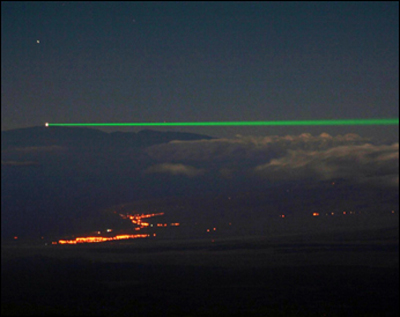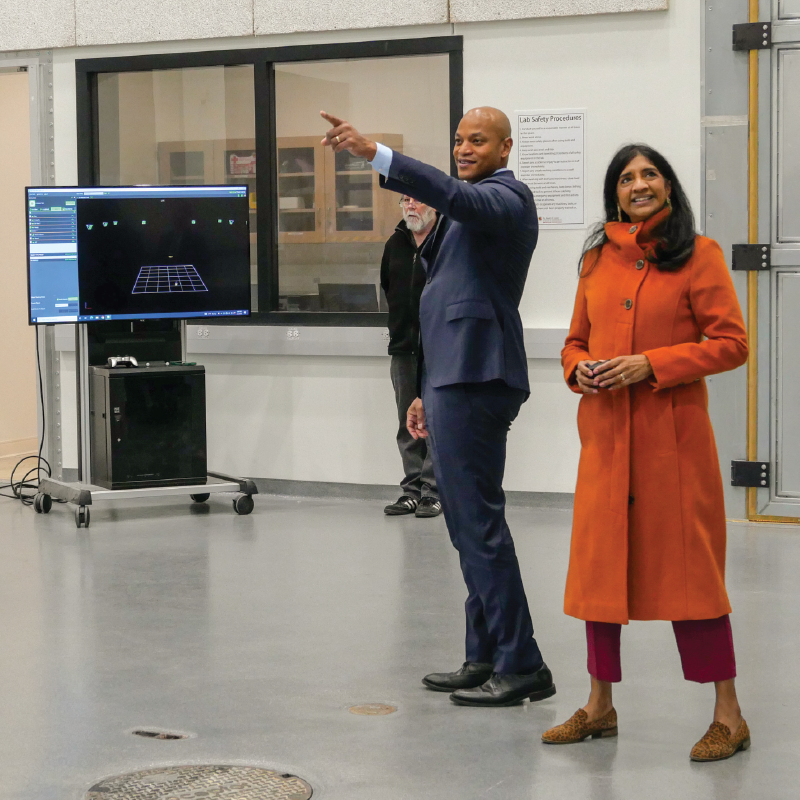News Story
Mikhail Vorontsov joins University of Dayton Ladar and Free Space Optical Communications Institute

A laser beam sent over 149 km (more than 93 miles) from Mauna Loa on the big island of Hawaii to Mount Haleakala on Maui during summer 2009 as part of the Coherent Optical Multi Beam Atmospheric Testbed project. The bright spot to the left is the 3.6-meter aperture of the Air Force telescope—the laser beam’s destination point. Vorontsov writes: “It is a good example of beauty and excitement of science we should somehow manage to pass to our students.”
Prior to joining the University of Dayton, Vorontsov had worked at the Army Research Laboratory (ARL) for more than 12 years.
In July and August 2009, Vorontsov and ISR Assistant Research Scientist Thomas Weyrauch were part of the ARL and AFRL team working on the Coherent Optical Multi Beam Atmospheric Testbed (COMBAT) project, in which they studied the impact of atmospheric turbulence on laser beams propagation and adaptive compensation over 149 kilometers (93 miles) between the mountains Mauna Loa on the island of Hawaii and Haleakala on the island of Maui. This project was funded by the High-Energy Laser Joint Technology Office, and is a part of the ongoing development capabilities for performance analysis of long-range optical systems such as high-performance laser communications, imaging and laser beam projection systems.
The experiments included measurement of the most basic laser beam parameters including intensity scintillations, phase characteristics, and image wander and widening simultaneously for two of the most important Department of Defense wavelengths (0.53 micron and 1.06 microns).
The research team achieved highly accurate targeting in which the laser beacon beam from Mauna Loa was able to be pointed onto a 0.9 m section of 3.6 m telescope 149 km away be collimated and then reflected back to the same laser beacon platform at the Mauna Loa NOAA observatory from which it was sent out.
The COMBAT experiments have shown that the atmospheric turbulence induced laser beam intensity scintillations can be enormously large and can significantly exceed predictions. This leaves only a small chance for conventional adaptive optics (AO) techniques to be efficient.
The COMBAT experiments also provided the first demonstration of target-in-the-loop adaptive laser beam phase control over very long atmospheric propagation paths. In these experiments a laser beam was sent to a retro-target over 149 km. The laser spot brightness at the target plane was increased by controlling the outgoing beam phase using a stochastic parallel gradient descent control algorithm developed by Vorontsov’s team.
In addition, the team uncovered an important problem that may seriously impact performance of many long-range optical systems—strong refraction that bends the laser beam propagation trajectory. As a result, telescope and laser beam pointing should be continuously corrected even for stationary targets.
Published September 30, 2009









